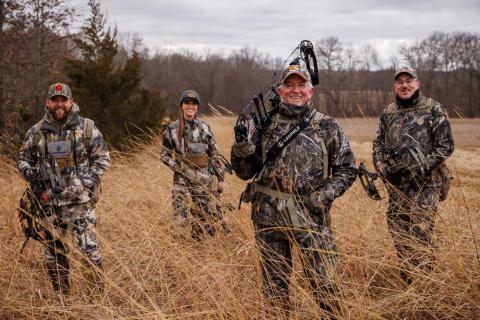Jeff Dennis
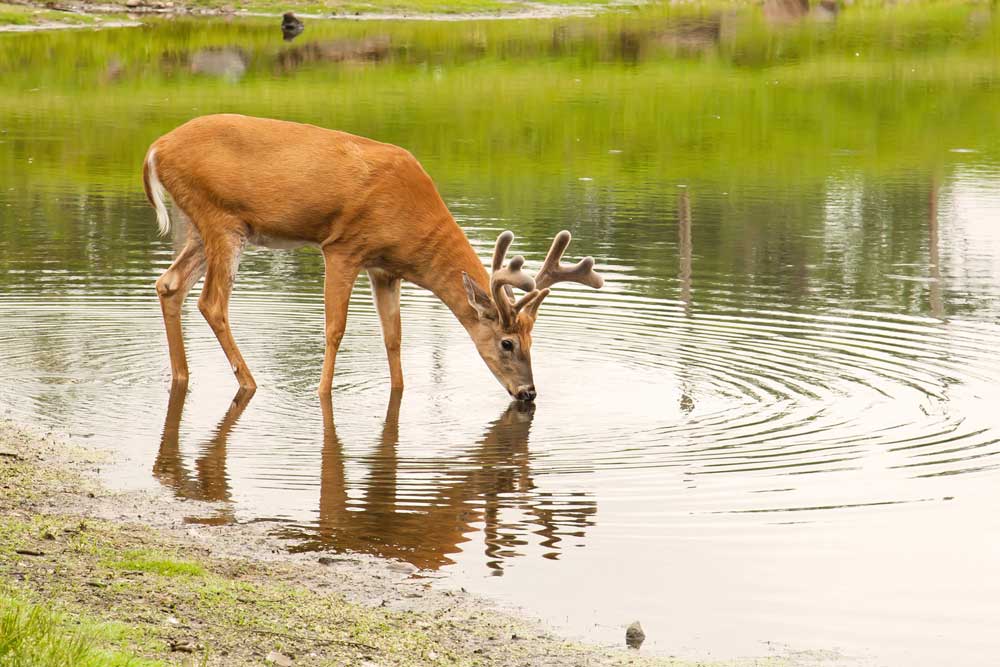
These days the seasonal precipitation cycle is more unpredictable than ever, with droughty weather becoming severe, and the increased possibility of localized flooding at the other end of the spectrum. Farmers know that they cannot run out of water for their livestock during a hot and dry weather cycle, and gamekeepers need to apply that same knowledge so their wildlife avoids the same stress and sometimes disease that a decrease of water can cause.
As you’ve heard, all living things need water. Critters of all kinds will visit a clean, reliable water source and utilization will likely grow over the years as more and more generations and different species imprint on the site.
As an example; whitetails require anywhere from about 1.5 to 3 quarts of water per day for every 100 pounds of body weight. During part of the year it would average on the low end, but their requirements about double during the summer, and during the rut. The amount of water needed increases for lactating does that are supporting fawns or for deer in more arid regions. Keep in mind this requirement doesn’t mean a deer will necessarily drink this amount of surface water. It’s a combination of preformed water (moisture taken in from their forage diet) and surface water.
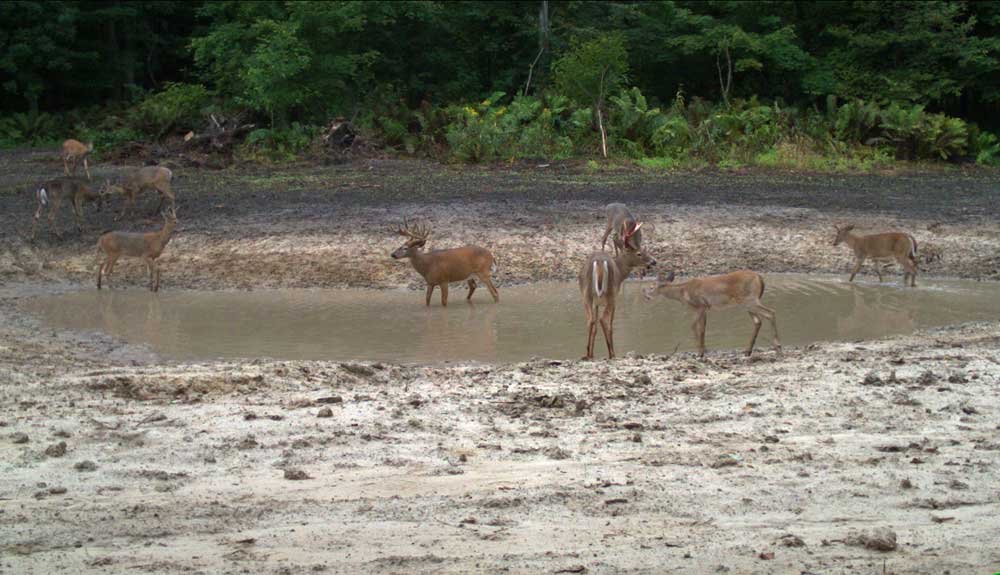
The concept of utilizing a backhoe to dig a hole in the earth can work but does not guarantee success. The decision about “where to dig” bears a lot of weight in the process of creating water sources.
During a warm fall, deer hunters understand that there is no better feature to hunt over than a water hole during a prolonged dry spell. The value of hunting over whitetail food sources is always hard to beat…except during dusty, droughty conditions.
A similar equation, applied to any other game species, can make it clear to the wildlife enthusiast that water is a powerful attractor. Simplify the scale of this equation to one’s own backyard and visualize how many songbirds come to the bird-feeder and how many come to the water in the bird bath. The logic is inescapable, that water sources add value to the landscape, and the better they are suited to wildlife the more they will be utilized.
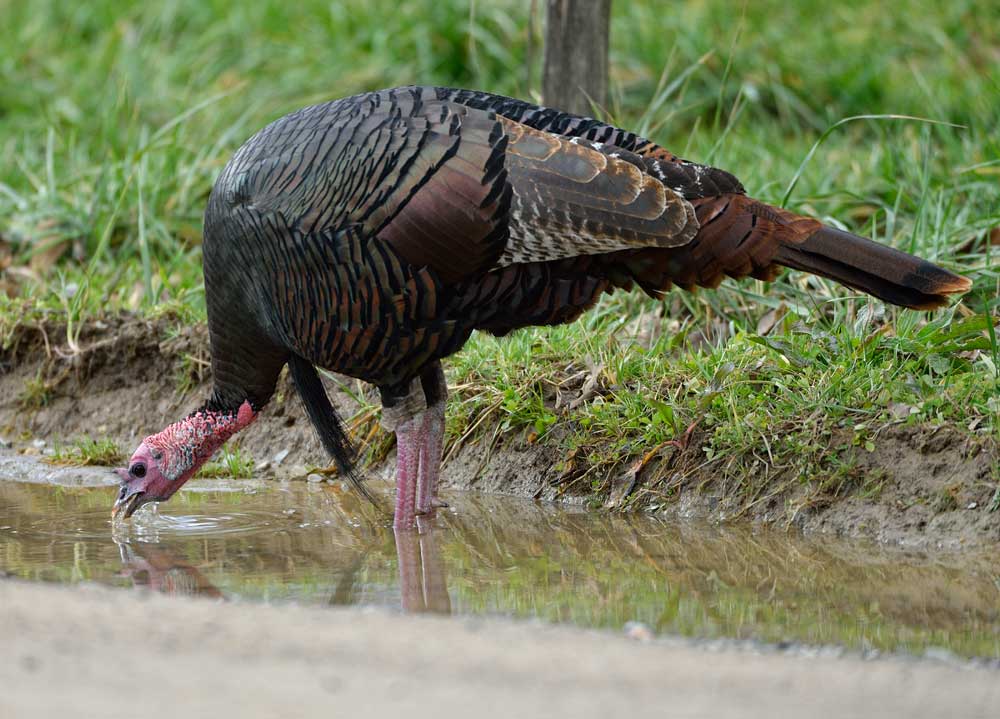
Occasionally water can be found welling up from a spring in the land, and any ephemeral water source like this can signal an area as a great place to create a water source. In this case a simple dam may be all you need to hold enough water to satisfy your local critters.
If topography is a feature of your tract of land, then sum up where the lowest points are in order to plan where a water hole might make the best sense. If water pools in an area, it’s obviously running into that spot that usually makes a good place to start. But even eyeing a slope or drainage, and again, creating some sort of dam to collect the runoff will likely be all you need.
Many “cow pasture ponds,” some decades old and standing the test of time, were created using these two models. Groundwater reserves aren’t what they were in the past and identifying where springs used to flow is a more common outcome today. Digging a hole does not mean that it will hold water year-round, and that is usually the goal of any water source for wildlife. Depending on your soil type, you may need to use some sort of pond liner so that once the depression or dam fills, it isn’t immediately lost through sandy or rocky soil.
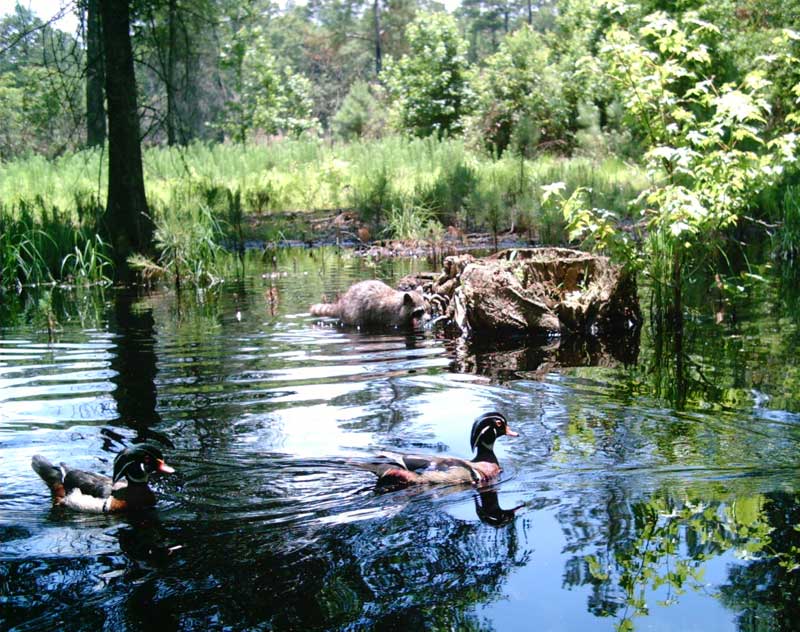
A myriad of borrow pits have been created over time as man constructs road systems, including everything from interstates to country roads. These structures are great indicators of what areas and what soils, might hold water well. If you drive by a borrow pit during summer and it is completely dry, then that tells one story, and one should determine to look elsewhere for creating a water source. But a borrow pit that holds water only part of the year, might also indicate that some further excavation could turn that structure into a year-round source of water. Trial and error is, unfortunately often part of the process, but the intelligence gained from an existing borrow pit holding H2O will help you plan your own.
Hardwood bottoms, pocosins, bays and other Lowcountry style formations can hold water during wet cycles. The best thought process is to identify and document the water levels over time - including taking note of any wildlife that comes to utilize the pothole. Some woodland water formations just seem to be better suited to some wildlife species than others. For example, why do wood ducks pile into flooded shallow depression with native grass, rather than opt to drop into a deeper and more open water source nearby? It’s the specific needs of that species that makes that spot more attractive when it comes to the natural world. The keen observer will focus on what critters they can attract versus which they cannot.
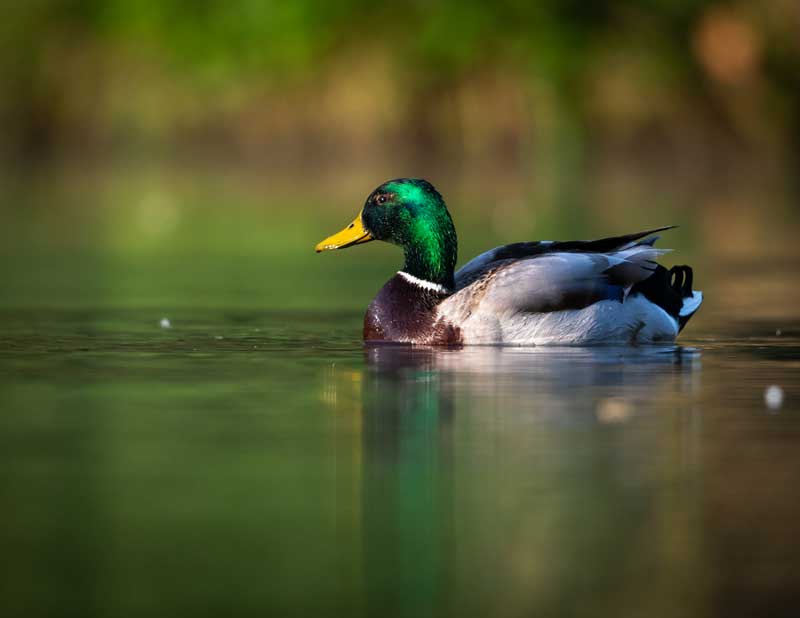
Watching where the run-off from those “frog-gagging rainfalls” flows into is just a part of learning how water runs across your land. Where is the nearest creek or river formation to you, and how does your land drain towards it? Only after monitoring these patterns can anyone master the water in their area.
Digging a pond along a ditch that drains water is typically a reliable place to create a water source. Using a water control structure to create a backwater effect is another dependable formula, but be careful not to create “flooding.” This can have effect on your native forage, food plots and your neighbor’s land. Some creeks, ditches and other formations actually double as durable property lines that can remain unchanged for generations. If you have beavers in the area, you probably won’t have to create a backwater at all - they’ll do it for you.
While creating a water source that appeals to wildlife usually isn’t that difficult, in some cases it can take time, sometimes even years depending on the region and topography. In addition having a viable water source should attract wildlife pretty quickly, but it may take some species a while to imprint on the spot, which can be frustrating. Some migratory wildlife is said to be imprinted on certain water sources, marshes or other formations, a process that likely took place over decades. This is the same revelation that some dove field managers discover when they find a historical agriculture field that just seems to attract doves, when other fields are slow. While there is no substitute for an established water hole that wildlife love, it is fun to think that another water source with future wildlife activity is just waiting to come to life.
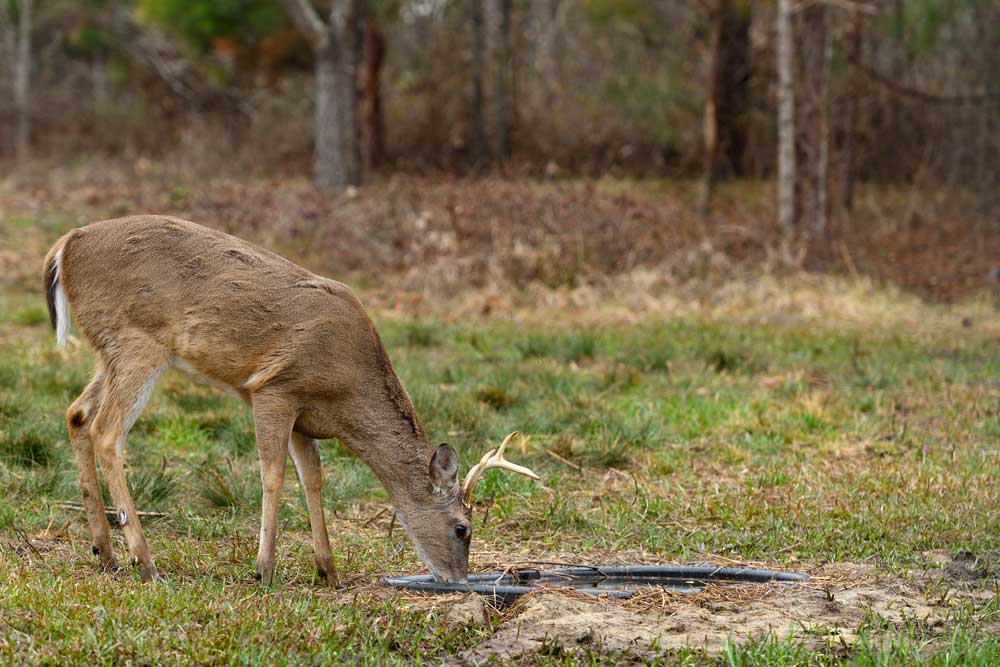
If your water source includes running water, then it may attract beavers, depending on your locale. Beavers are instinctively drawn to running water in order to stop it up, which can create unwanted flooding, which, in turn, can lead to timber or crop damage. If a beaver infestation interferes with your water source plans, then it’s likely that a trapper will need to be dispatched to remove them.
Another common water structure maintenance requirement is mowing or clearing along the edges of water holes or creating easy entry points so that access is available to all critters big and small, where a clear line of sight to spot predators is comforting.
Enlarging existing water holes is always an option too, but beware of unintended consequences. For example, a pond that is visually appealing to the eye can be enlarged, but if the depth isn’t right in the new area, you can be left with an unsightly visual if the water level drops enough to expose the new area. Another example would be if animals are already using a pond, and the decision to enlarge the pond somehow “changes the equation” for the wildlife and they no longer find it appealing. Again, it is a trial and error process, but a safer play might be to create a new water source near to the proven one, without altering the original water source.
Jeff Dennis is a longtime outdoorsman. Read his blog at LowcountryOutdoors.















